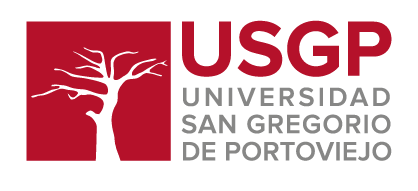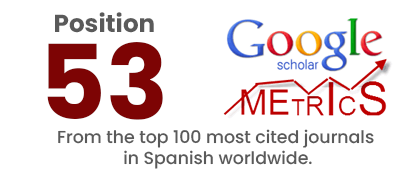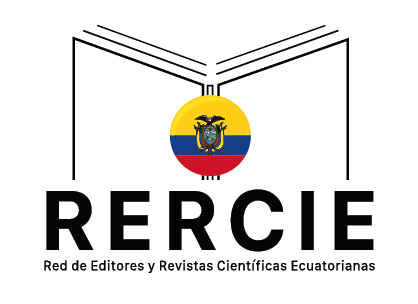The Role of Institutional Context in Perceived Mental Workload in Educational Institutions: Implications for Teacher Quality of Work Life Management.
DOI:
https://doi.org/10.36097/rsan.v1i58.2637Keywords:
Mental workload; Education; Teachers; Ergonomics; Occupational Safety and Health.Abstract
The aim of this study is to analyze the perceived mental workload in two educational institutions with similar socioeconomic and geographic characteristics. A non-experimental quantitative cross-sectional methodology was chosen, using the NASA TLX to measure mental workload, subjecting the data to a non-parametric analysis of variance Kruskal-Wallis ANOVA and the DSCF test for post hoc comparisons. The results revealed that differences in perceived workload are more related to institutional context than to individual factors such as age, gender, or the location of the courses taught by the instructors. This suggests that the internal characteristics of educational institutions and the coping skills used by instructors are crucial for understanding and properly managing perceived mental workload. These findings underscore the importance of tailoring mental workload management strategies to the specific characteristics of each educational institution to enhance the professional quality of life and, ultimately, the quality of education they provide.
Downloads
References
Agudelo, N. C., & Chaparro, I. H. (2019). La Formación De Sujetos Sociales: Contextos Escolares Pertinentes. Revista Latinoamericana de Estudios Educativos (Colombia), 15(2), 85-110. https://www.redalyc.org/journal/1341/134162234005/html/
Al Asadi, J., Khalaf, S., Al Waaly, A., Abed, A., & Shami, S. (2018). Burnout among primary school teachers in Iraq: Prevalence and risk factors. Eastern Mediterranean Health Journal, 24(03), 262-268. https://doi.org/10.26719/2018.24.3.262
Alvarado, V. M., Manjarrez, M., & Romero, R. (2010). La calidad educativa y las competencias profesionales en la conformación de un cuerpo académico en la Escuela Nacional de Biblioteconomía y Archivonomía (México). Zona Próxima, 12. https://doi.org/10.14482/zp.12.792.46
Barrón, J. G., & Sánchez, M. L. (2022). Resiliencia organizacional: Una revisión teórica de literatura. Estudios Gerenciales, 38(163), 235-249. https://doi.org/10.18046/j.estger.2022.163.4912
Bernal, C. A. (2010). Metodología de la investigación: Administración, Economía, Humanidades y Ciencias Sociales. Pearson Educacin.
Bravo-Rojas, L. A., Bravo-Rojas, S. L., & Luis Esneider Caro-Triana. (2014). Mucho ruido y pocas nueces: El quehacer docente y el uso de las TI. En P. E. Oviedo & L. H. Pastrana (Eds.), Investigación y desafíos para la docencia del siglo XXI (Primera edición, pp. 121-130). Universidad de La Salle. https://biblioteca.clacso.edu.ar/Colombia/fce-unisalle/20170117032546/investigacion.pdf
Bray, D. A., Girvan, D. C., & Chorcora, E. N. (2023). Students’ perceptions of pedagogy for 21st century learning instrument (S-POP-21): Concept, validation, and initial results. Thinking Skills and Creativity, 49, 101319. https://doi.org/10.1016/j.tsc.2023.101319
Castilla, S., Colihuil, R., Lagos, R., & Bruneau, J. (2021). Carga laboral y efectos en la calidad de vida de docentes universitarios y de enseñanza media. Chakiñan, Revista de Ciencias Sociales y Humanidades, 15, Article 15. https://doi.org/10.37135/chk.002.15.11
Castro, W. R. A., Pereira, H. O. L., & Vera, G. R. (2021). Satisfacción laboral de los docentes: Un análisis desde los factores extrínsecos e intrínsecos. Revista Venezolana de Gerencia, 26(5), Article 5. https://doi.org/10.52080/rvgluz.26.e5.13
Charria, V. H., Romero, M. P., & Sarsosa, K. (2022). Bienestar laboral y condiciones de trabajo en docentes de primaria y secundaria. CES Psicología, 15(3), 63-80. https://doi.org/10.21615/cesp.5984
Chukwuemeka, M., Okonkwo, P., Njoku, J., Igwe, E., Oyewumi, J., & Ugwuanyi, C. (2023). Work-related stress, quality of life, and coping mechanism among lecturers in a Tertiary Educational Institution in Anambra State, Nigeria. BMC Psychology, 11(1), 73. https://doi.org/10.1186/s40359-023-01114-5
Córica, J. L. (2020). Resistencia docente al cambio: Caracterización y estrategias para un problema no resuelto. RIED. Revista Iberoamericana de Educación a Distancia, 23(2), 255-272. https://www.redalyc.org/journal/3314/331463171013/html/
Dias, E. N., & Pais-Ribeiro, J. L. (2019). El modelo de coping de Folkman y Lazarus: Aspectos históricos y conceptuales. Revista Psicologia e Saúde, 11(2), 55-66. https://doi.org/10.20435/pssa.v11i2.642
González-Palacios, Y. L., Ceballos-Vásquez, P. A., & Rivera-Rojas, F. (2021). Carga mental en profesores y consecuencias en su salud: Una revisión integrativa. Cadernos Brasileiros de Terapia Ocupacional, 29, e2808. https://doi.org/10.1590/2526-8910.ctoAR21232808
Hernandez, R., & Mendoza, C. P. (2018). Metodologia de la investigacion: Las rutas cuantitativa, cualitativa y mixta. McGraw-Hill Interamericana.
Hernandez, R., Roll, S. C., Jin, H., Schneider, S., & Pyatak, E. A. (2022). Validation of the National Aeronautics and Space Administration Task Load Index (NASA-TLX) adapted for the whole day repeated measures context. Ergonomics, 65(7), 960-975. https://doi.org/10.1080/00140139.2021.2006317
Holguin-Alvarez, J., Ruiz-Salazar, J., Castillo, F. F. L., & Acha, D. M. H. (2023). Resiliencia organizacional (ERESO) en una muestra de profesores peruanos: Validación de escala. Revista Venezolana de Gerencia, 28(101), Article 101. https://doi.org/10.52080/rvgluz.28.101.7
Instituto Nacional de Seguridad y Salud en el Trabajo [INSST]. (2022). Tema 9. La carga mental de trabajo—Contenido del programa del proceso selectivo para el acceso, por el sistema general de acceso libre, en la Escala de Titulados Superiores del Instituto Nacional de Seguridad e Higiene en el Trabajo. Temas específicos de prevención de riesgos laborales. Parte 4: Ergonomía y psicosociología aplicada. https://www.insst.es/documents/94886/4155701/Parte%204.%20Ergonom%C3%ADa%20y%20psicosociolog%C3%ADa%20aplicada%20FINAL.pdf
Jamovi. (2023). The jamovi project (2.3) [Software]. https://www.jamovi.org
Li, S., Liu, Y., Li, K., Cao, G., Li, S., Mao, Y., Wang, Y., Feng, J., & Tang, S. (2023). Validation and effect of the NASA-TLX score on the assessment of the workload of pediatric robotic operations. Surgical Endoscopy, 37(7), 5077-5085. https://doi.org/10.1007/s00464-023-09959-y
López, Á., Virgüez, A., Silva, C., & Sarmiento, J. (2017). Desigualdad de oportunidades en el sistema de educación pública en Bogotá, Colombia. Lecturas de Economía, 87, 165-190. https://doi.org/10.17533/udea.le.n87a06
Ministerio de Salud y Protección Social [MinSalud]. (s2023). Ciclo de Vida. https://www.minsalud.gov.co/proteccionsocial/Paginas/cicloVida.aspx
Pineda, W. F., Dávila, J., & Alva, C. L. (2021). Estrés laboral del docente de primaria, en el trabajo remoto. Revista Ciencia y Tecnología, 17(3), Article 3. https://revistas.unitru.edu.pe/index.php/PGM/article/view/3827
Raj, R. P., & Chand, S. P. (2023). Access and Equity: The Relationship Between Parent’s Socioeconomic Status and Secondary School Student’s Academic Achievement. International Journal of Instruction, 16(3), 1013-1032. https://doi.org/10.29333/iji.2023.16354a
Regalado, D., & Rosero, O. (2023). Carga de trabajo y su efecto en la salud de los trabajadores: Un estudio bibliométrico. Duazary, 20(1), Article 1. https://doi.org/10.21676/2389783X.5103
Salazar, C., Ficapal, P., Peñarroja, V., & Enache, M. (2022). Validation of the Spanish version of the Technostress Creators Scale in Chilean Workers. https://doi.org/10.6018/analesps.509551
Tapasco, O. A., & Giraldo, J. A. (2017). Comparative Study about Perception and use of ICT among Teachers of Public and Private Universities. Formación universitaria, 10(2), 03-12. https://doi.org/10.4067/S0718-50062017000200002
Downloads
Published
How to Cite
Issue
Section
License
Copyright (c) 2024 Marisol Ramirez Peña, Diego Fernando Lotero Vasquez, Daydu Milena Robayo Barrios, Danny Rachit Garrido Raad

This work is licensed under a Creative Commons Attribution-NonCommercial-NoDerivatives 4.0 International License.


















